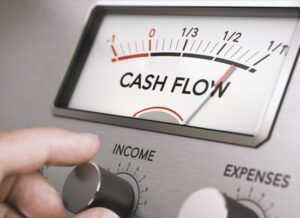
Thanks to CBM Supervisor Tom Hudson for developing the following article.
On April 14, the Small Business Administration (SBA) released additional guidance that provided more information about the implementation of the Paycheck Protection Program (PPP) for self-employed taxpayers.
Previously, it was not explicitly stated that taxpayers who file a Schedule C were included in the program although many interpretations of the SBA’s language indicated that they were eligible. The SBA did confirm through the most recent guidance that a taxpayer who files a Schedule C is eligible for the PPP program.
Further, the SBA clarified that partnerships should apply for PPP loans at the partnership level and include the income of the partners at the entity level, as opposed to each partner applying at the individual level. This was intended to reduce the number of applications and reduce confusion. For partnerships, the self-employment income of each general active partner may be reported as a payroll cost, still subject to the $100,000 annualized limit.
The SBA clarified the logic behind how a schedule C filer is supposed to calculate their allowable loan amount under the PPP. The guidance has instructed Schedule C filers to use their Schedule C line 31 net profit amount from the 2019 Schedule C as the basis for the payroll cost calculation in the PPP.
The SBA also clarified that the loan forgiveness process for Schedule C filers will consider an “owner compensation replacement” component alongside the other requirements to qualify for loan forgiveness. This is calculated by multiplying 2019’s net profit from Schedule C by 8/52s (8 weeks divided by 52 weeks in a year). This is the amount that will be included in the loan forgiveness calculation and is specific to Schedule C filers.
Documentation
Whether or not an entity has employees, the entity must submit evidence of business rent, business mortgage interest payments on real or personal property, or business utility payments during the covered period if loan proceeds were used for those purposes. The 2019 Form 1040 Schedule C that was provided at the time of the PPP loan application must be used to determine the amount of net profit allocated to the owner for the eight-week covered period.
In short, the guidance released was in line with CBM’s expectations and provided updated instructions as to how the program will function for self-employed business owners.
Please contact CBM Tax Practice Director Richard Morris using our online contact form for more information.
Councilor, Buchanan & Mitchell (CBM) is a professional services firm delivering tax, accounting and business advisory expertise throughout the Mid-Atlantic region from offices in Bethesda, MD and Washington, DC.



